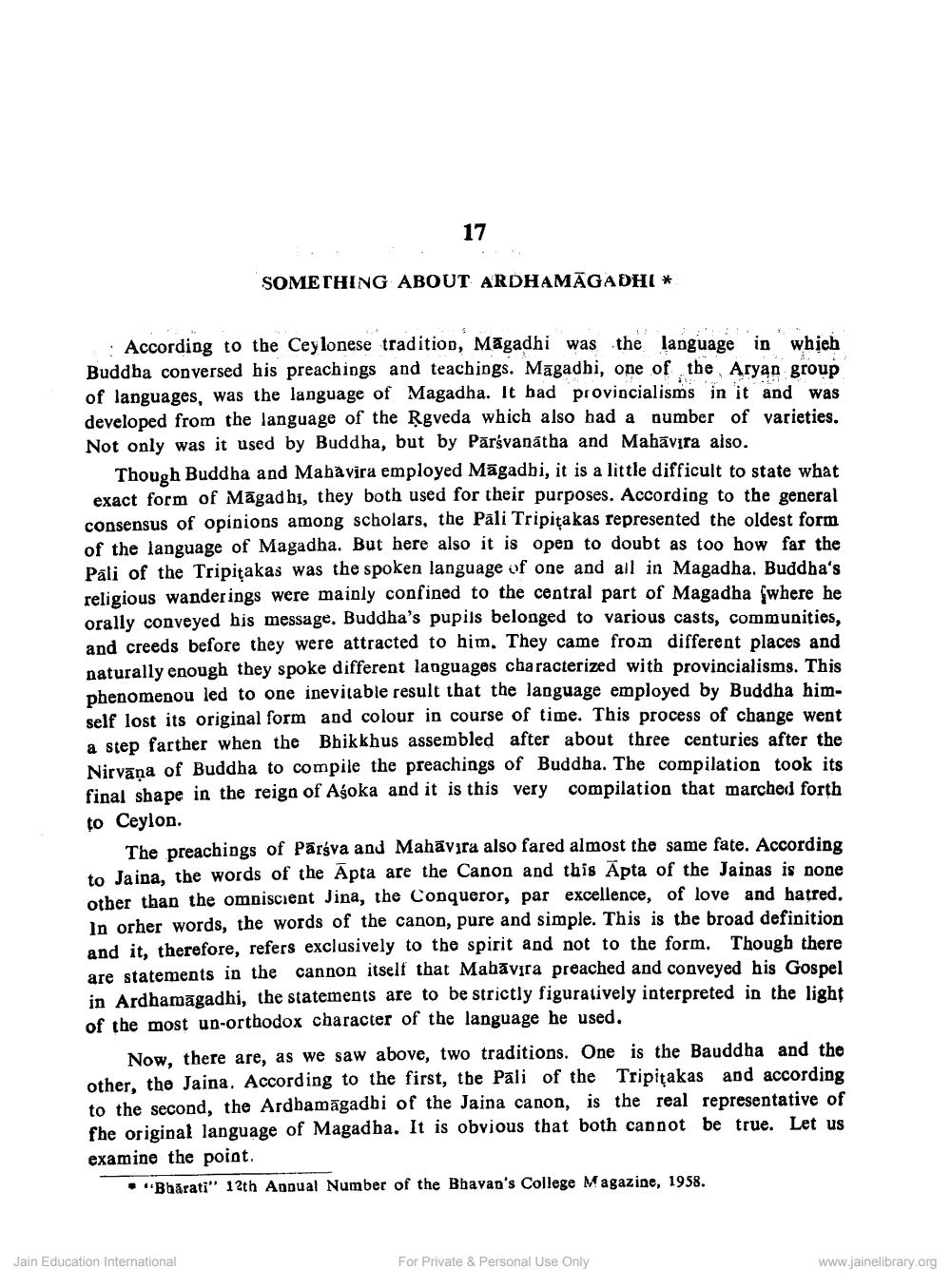________________
17
SOMETHING ABOUT ARDHAMĀGADHI *
According to the Ceylonese tradition, Māgadhi was the language in which Buddha conversed his preachings and teachings. Māgadbi, one of the Aryan group of languages, was the language of Magadha. It bad provincialisms in it and was developed from the language of the Rgveda which also had a number of varieties. Not only was it used by Buddha, but by Pārsvanātha and Mahavira also.
Though Buddha and Mahavira employed Māgadbi, it is a little difficult to state what exact form of Māgadhi, they both used for their purposes. According to the general consensus of opinions among scholars, the Pali Tripitakas represented the oldest form of the language of Magadha. But here also it is open to doubt as too how far the Pali of the Tripitakas was the spoken language of one and all in Magadha. Buddha's religious wanderings were mainly confined to the central part of Magadha where he orally conveyed his message. Buddha's pupils belonged to various casts, communities, and creeds before they were attracted to him. They came from different places and naturally enough they spoke different languages characterized with provincialisms. This phenomenou led to one inevitable result that the language employed by Buddha himself lost its original form and colour in course of time. This process of change went a step farther when the Bhikkhus assembled after about three centuries after the Nirvana of Buddha to compile the preachings of Buddha. The compilation took its final shape in the reign of Asoka and it is this very compilation that marched forth to Ceylon.
The preachings of Pārsva and Mahavira also fared almost the same fate. According to Jaina, the words of the Apta are the Canon and this Apta of the Jainas is none other than the omniscient Jina, the Conqueror, par excellence, of love and hatred. In orher words, the words of the canon, pure and simple. This is the broad definition and it, therefore, refers exclusively to the spirit and not to the form. Though there are statements in the cannon itself that Mahavira preached and conveyed his Gospel in Ardhamagadhi, the statements are to be strictly figuratively interpreted in the light of the most un-orthodox character of the language he used.
Now, there are, as we saw above, two traditions. One is the Bauddha and the other, the Jaina. According to the first, the Pali of the Tripitakas and according to the second, the Ardbamāgadbi of the Jaina canon, is the real representative of fhe original language of Magadha. It is obvious that both cannot be true. Let us examine the point.
• Bharati" 12th Annual Number of the Bhavan's College Magazine, 1958.
Jain Education International
For Private & Personal Use Only
www.jainelibrary.org




